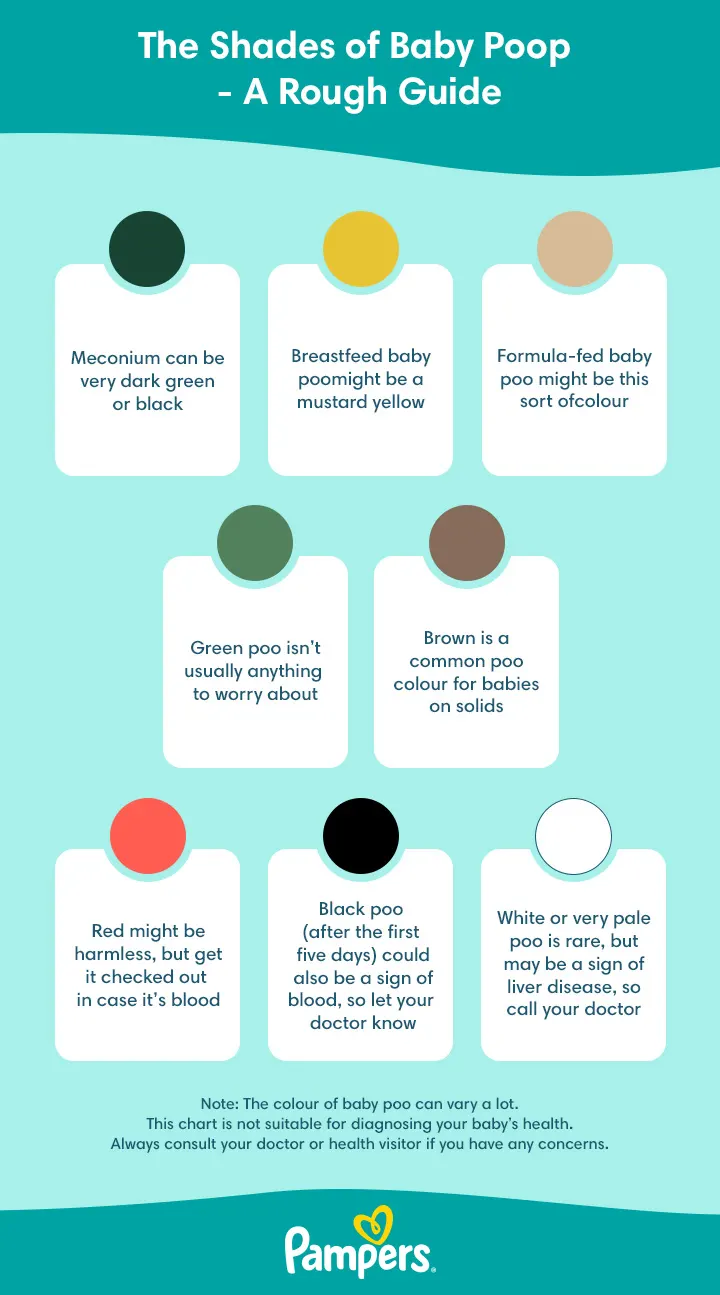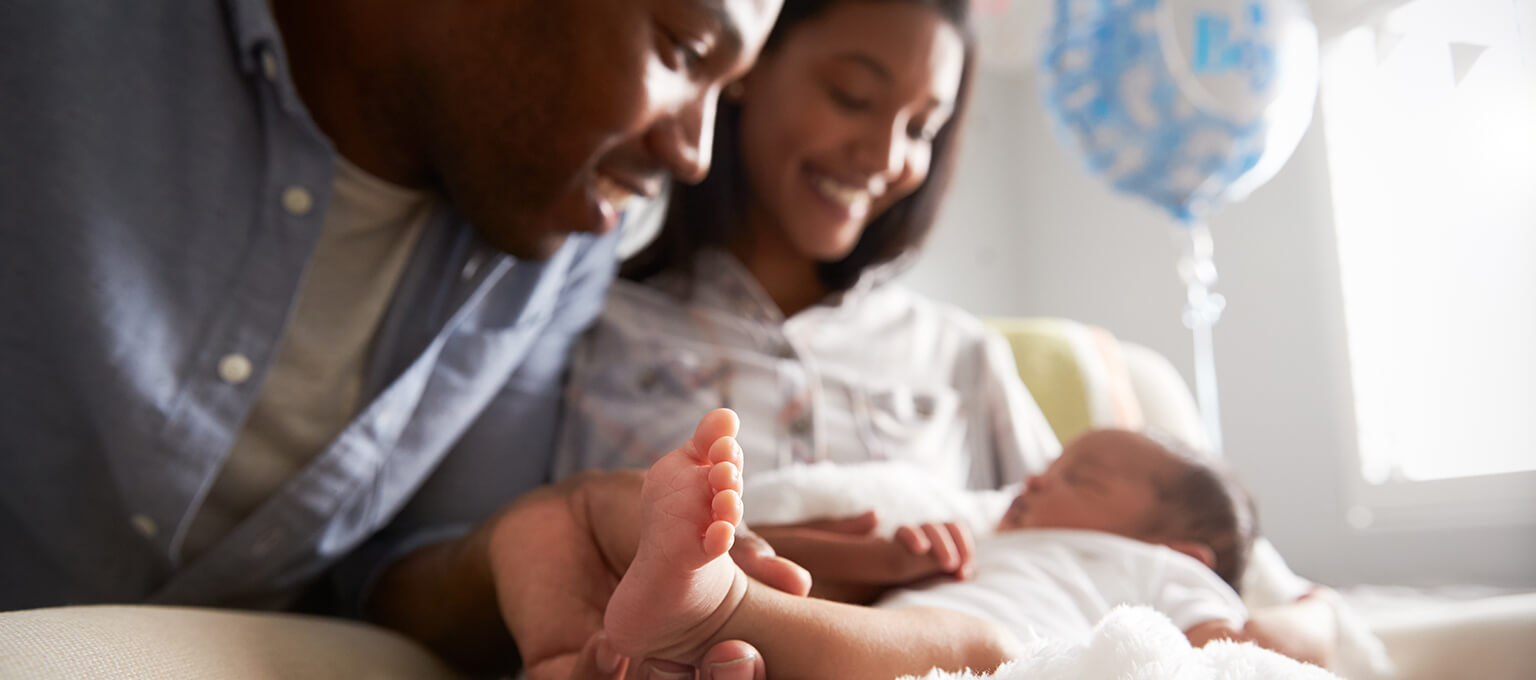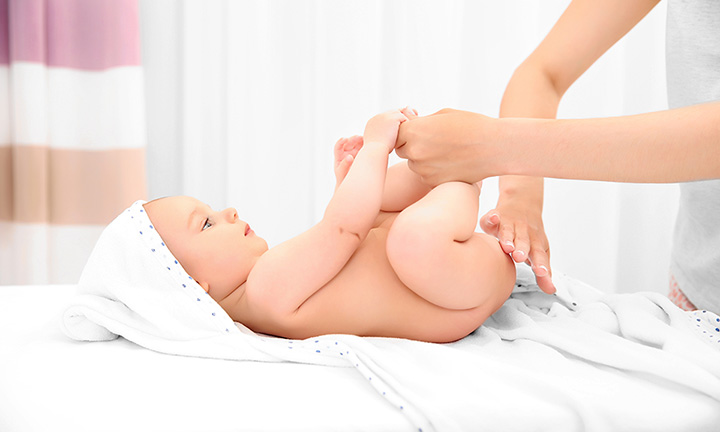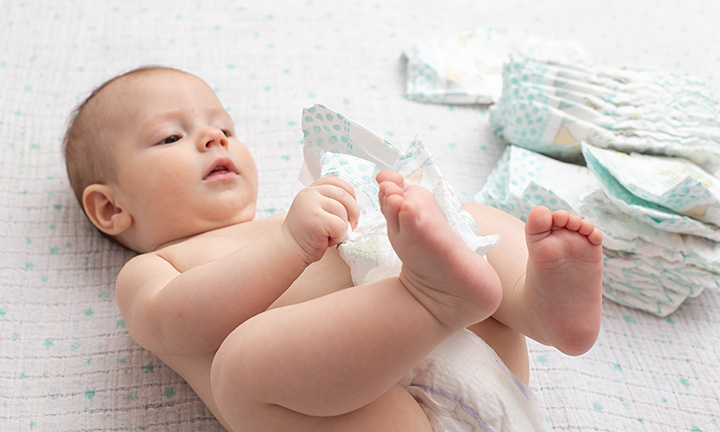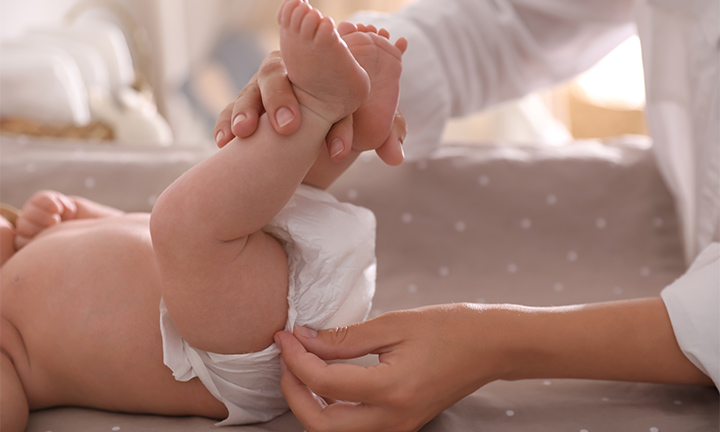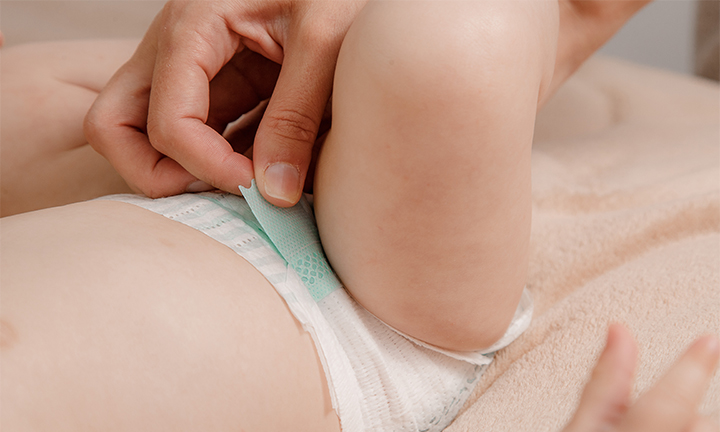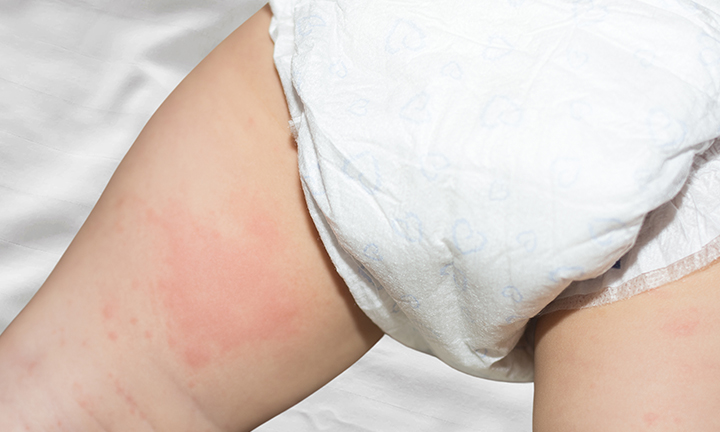
Baby Poo: Your Ultimate Guide and Colour Chart
Dealing with baby poo is a common experience for parents, but the variety can be surprising. Did you know that baby poo can vary in consistency from runny to firm and in colour from light to dark, including shades of green, black or yellow? Changing nappies is a regular part of your daily routine and may help you monitor your baby’s well-being, as the colour, consistency and frequency of their poo can provide valuable insights into their health and development. Read on for your ultimate poo guide and colour chart!
Your Baby’s Poo — What’s Expected?
You may be curious about what healthy baby poo should look like. This is a valid concern, as the colour and consistency of your baby’s stool will change over time based on various factors, especially what your baby is eating.
Here’s a general guide to what you’ll likely find in your little one’s nappies during the first few days, weeks and months after your baby’s birth.
Meconium
In the first few days after birth, your newborn’s nappies will likely contain a sticky, dark green, tar-like substance, with hardly any smell. This is called meconium.
Meconium is a special type of stool that your baby produces, made up of skin cells and other particles that were swallowed along with amniotic fluid while still in the uterus.
It usually takes a few days for all the meconium to be eliminated from your newborn's system. During this time, the stool will gradually change from almost black to a yellowish mustard colour and will become less thick and sticky.
Regardless of whether you’re breastfeeding or using formula, giving your baby colostrum (your very first, nutrient-rich breast milk) for the first few feeds can speed up the passage of meconium.
Tell your midwife or doctor if your baby’s first bowel movement doesn’t happen within the first 24 hours after birth.
Regular Baby Poo
Once the meconium is out of your baby’s system, regular or ‘normal’ baby poo can vary a lot, depending on how you’re feeding your little one. Here’s a brief guide to what your little one’s nappies could hold in store for you:
What the Various Baby Poo Colours May Mean
You might be surprised by a change in the colour of your baby’s poo, which can range from the yellowy-mustard hues of breast-milk poo and the darker brown/tan of formula-fed baby poo to various other shades of yellow, brown or even green. You may also notice mucus in baby poo, which can create a translucent or milky colour.
Warning Colours
Mucus in Baby Poo
Mucus in baby poo is often harmless and normal. Meconium frequently contains some mucus, and it’s not abnormal to find small amounts of mucus in your baby’s poo as they grow older and eat more varied foods. Mucus in baby poo is typically translucent or slightly milky in colour. However, if mucus in baby poo is accompanied by other symptoms, this could be an indication of an infection or digestive issues.
Contact your baby’s doctor if you notice persistent mucus in your baby’s poo, or if your little one appears unwell.
Baby Poo Colour Chart
This handy chart below can help you visualise the array of baby poo colours, what’s typical and when to contact your baby’s doctor:
How Often Should Your Baby Poo?
How often your baby fills a nappy can differ a lot, depending on their age and on what method you use for feeding your baby.
Can Your Baby Poo Too Much?
The colour, frequency and consistency of your baby’s poo can vary. As long as your child’s weight gain and growth are on track, and the stools are soft, things are probably fine.
Keep in mind, that it’s not unusual for breastfed babies to pass looser stools.
However, if your baby’s poo seems watery, especially if those bowel movements suddenly start coming more frequently, your little one may have diarrhoea.
Watery poo accompanied by a fever and foul-smelling nappies is likely to be a sign of a stomach infection.
Always let your doctor know if you suspect your baby has diarrhoea, and make sure that they get enough fluids in the meantime because babies have a higher risk of dehydration.
If your baby is still exclusively breast or bottle-fed, you can do this by keeping on breastfeeding or giving your baby formula. It may help to give smaller quantities but more frequently than usual.
If your little one is eating solid foods or a combination of solids and breast milk or formula, try giving extra sips of water regularly.
When There’s No Poo — Constipation
With all the variation in how often your baby poos – from several times a day to once or twice a week – you may sometimes wonder how you can tell if your little one is constipated.
Constipation is more common after the introduction of solids, but it can occur in younger babies, too. Here are some typical signs that your baby might have constipation:
Fewer than three poos a week
Difficulty passing a stool
Bigger stools than usual
Hard, dry, lumpy or pellet-like poo
If your baby has an unusually firm tummy
Loss of appetite
Poo and wind that’s smellier than usual.
What Can You Do About Constipation?
Wondering how to help your baby poo? There are some things you can do to try and get things moving again. Lying your baby down and gently moving their legs in a cycling motion may help. A gentle tummy massage could also ease some of the pressure.
Here are other tips for managing constipation:
If your baby is eating solids, check that they’re getting enough fibre. Prunes, apples and pears are great for constipation.
Don’t give babies under the age of 6 months fruit juice.
If your baby is formula feeding, ensure you’re adding the correct amount of water to the formula. Follow the instructions and use the scoop provided.
If you don’t see any improvement in a day or two, talk to your doctor or health visitor. In some cases, your doctor may prescribe a laxative or examine your baby to rule out any underlying medical condition.
It’s good to note that if your baby hasn’t done a poo in a few days but their stools are still soft, they’re likely not constipated.
How to Tell if Your Baby Has Done a Poo
Your little one’s poo may not always be particularly smelly, particularly when they are a newborn. So how can you tell when it’s time to change the nappy?
Straining is a tell-tale sign. It’s common to see babies struggling to poo, so you may notice your little one’s getting a little red in the face when trying to push out their poo.
Over time, you’ll learn to recognise your baby’s facial expression when they’re passing a stool.
Check out our nappy size guide to ensure your baby’s nappy fits perfectly.
The Bottom Line
You might not have realised until now just how much there is to know about your baby’s poo, but don’t worry: There’s no need to go over every single dirty nappy with a magnifying glass! Once you get used to your child’s bowel movement patterns, and their usual colour and texture, you’ll probably notice any changes pretty quickly.
If you’re ever unsure or worried about anything you find in your little one’s nappy, your midwife, health visitor or doctor are there to help advise you and answer any of your specific questions.
Speaking of nappies, your little one will likely need a lot of them! So, download the Pampers Club app to collect points and earn rewards on all those nappy purchases. You deserve it!
How we wrote this article
The information in this article is based on the expert advice found in trusted medical and government sources, such as the National Health Service (NHS). You can find a full list of sources used for this article below. The content on this page should not replace professional medical advice. Always consult medical professionals for full diagnosis and treatment.
Read more about Newborn Baby
Related Articles
Join Pampers Club and get:

